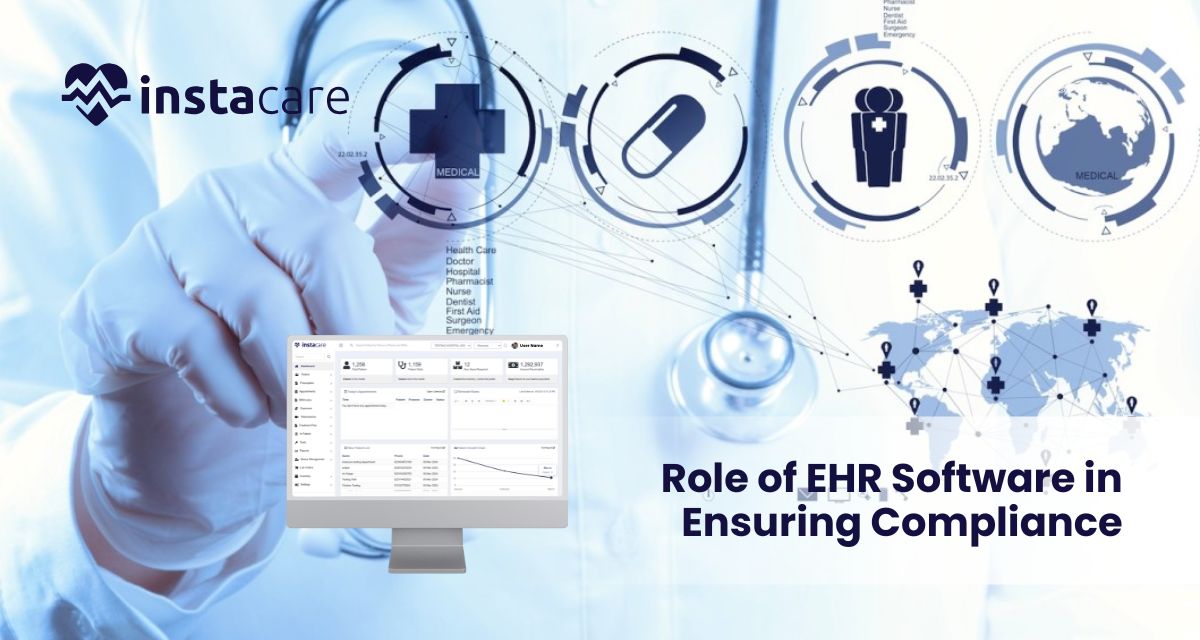Last updated on Monday, 21, October, 2024
Over the past decade, the health sector in Pakistan has experienced quite a change-the input of mainly technological changes. One of the most pivotal is the introduction of Electronic Health Record (EHR) software. The system has streamlined the management of patient data and played an important role in facilitating the healthcare-related compliance aspects. It aspires to explain the multifaceted role of EHR software in implementing adherence to Pakistani healthcare regulations, beginning with its benefits, toward considering its challenges and future prospects.
Table of Contents
Understanding EHR Software
EHR software is basically an electronic version of the paper chart for a patient and contains a humongous amount of information related to the health of the patient, including medical history, treatment plans, medications, allergies, radiology images, and laboratory test results. Unlike other paper records, EHRs are supposed to be accessed by various healthcare providers by authorized users and have served to enhance the continuity of care.
Key Features of EHR Systems
Interoperability: EHRs are able to permit data exchange across other health information systems so that communication between the service providers goes smoothly.
- Data Security: EHRs are equipped with robust security features that protect sensitive patient information.
- Clinical Decision Support: EHRs have alerts and reminders so that the healthcare provider has the capacity to enhance their clinical decision-making.
- Patient Engagement: Some EHRs support a patient portal so that patients can view their health information and communicate with their providers.
Regulatory Landscape in Pakistan
Coverage of Pakistan’s healthcare occurs through a package of federal and provincial legislation that aims to ensure quality care and protect the rights of patients. Significant laws governing EHR software include:
- Pakistan Medical and Dental Council (PMDC) Regulations : These lay down the standards to which medical practice is expected to conform, keeping in view the maintenance of patient records.
- The Drug Regulatory Authority of Pakistan (DRAP): DRAP oversees the medicine registration, exercising safety and efficacy standards that may be recorded on the EHR systems
- Health Information Technology (HIT) Policy: Formulated by the Ministry of National Health Services, this policy encourages the adoption of health IT, a condition that includes EHRs to enhance healthcare delivery.
EHR Software and Compliance
1- Accurate Record Keeping
Proper documentation is one of the aims of EHR software, which essentially maintains accurate and detailed records. Proper documentation is a regulatory requirement by PMDC and other governing bodies. All patient interactions, treatments, and medications are recorded in a standardized format using EHR systems. This will not only ensure quality care for patients but will also act as a legal document in case of future disputes.
2- Data Security and Confidentiality
Data protection rules and regulations are a fundamental feature of healthcare in any country. EHR systems possess advanced security features like encryption, access control and audit logs which may ensure non-access to patient-related information by unauthorized individuals. In Pakistan, several laws are prevalent to protect the data of the patients and EHR Software ensures that it complies with the law by using relevant mechanisms required by the law to ensure security.
3- Reporting and Auditing Made Easy
EHR systems can even generate reports that can help in compliance with regulations. In any event, a healthcare provider can quickly access data on patient outcomes, effectiveness of treatment, and medicine use. This is very useful data for audits done by regulatory bodies such as DRAP and PMDC. Continuous audits ensure that the healthcare facilities are within the set standards. It also boosts the quality of care.
4- Encourages Clinical Guidelines and Protocols
EHR software may integrate clinical guidelines and protocols. This would enable healthcare providers to administer care based on the best practice recommendations of the regulatory authorities. The best practice can be illustrated by considering a simple example such as drug prescription, where the EHR application could alert the prescriber about possible interactions or contraindications of drugs, thereby protecting the patients and facilitating adherence to appropriate treatment guidelines.
5- Telemedicine and Remote Care
The COVID-19 pandemic has already encouraged telemedicine to grow in Pakistan. In fact, EHR systems form the backbone of any telehealth system that supports safe and secure data transmission and storage for their patients.
Obviously, this implies adherence to statutes covering remote consultations and continuity of care even during trying times.
Implementation Obstacles for EHR Software
EHR software offers numerous benefits, but its implementation in Pakistan is blocked by several major challenges:
1- Infrastructure Limitations
Many hospitals are rural area institutions, lacking the infrastructure to ensure that EHRs can be implemented.
Dearth of effective internet connectivity coupled with poor quality hardware deters the effective implementation of EHR software.
2- Hostility to Change
Healthcare providers are not well predisposed to change and apprehend releasing paper records because they abhor the “learning curve” they may have to endure, which will come to disrupt their workflow. Change management is an intervention that must be undertaken in such cases for this ill feeling of hospitality to change.
3- Interoperability of Data Issues
Even though the EHR systems are created to be interoperable, in practice it is not very often the case. In certain instances, the same systems cannot share data properly due to undesignated formats. The consequences are seen in such medical care and non-compliance.
4- Cost Factors
EHR software can be very costly, an unaffordable proposition for smaller health facilities. However, with smaller budgets, one cannot afford advanced EHR software in the market and may even delay the compliance process needed.
Future Outlook
The future of EHR software in Pakistan appears very bright with a number of initiatives that would rev up its adoption and efficacy:
1- Government Initiatives
The Pakistani government has started to realize the importance of health information technology, as well. National health data standards should be developed along with fostering the adoption of the EHRs among the healthcare providers for better compliance.
2- Training and Education
The implementation of EHRs requires training the health professionals as a way of reducing resistance to its adoption. With such training, hospitals can create the culture of digital record-keeping in service provision.
3- Public-Private Partnerships
Public-private partnerships ease the development of low-cost EHR options. The partnerships also spur health IT research and innovation, thus improving compliance and enhancing patient care.
Conclusion
EHR Software for Implementing Health Information in Pakistan: A Catalyst for the Regulation of Healthcare
EHR Software as a mandatory mechanism for the implementation of health information in Pakistan to regulate healthcare is not possible without including an accurate keeping of records, enhancement of data security, support of clinical guidelines, and promotion of telemedicine to contribute to improving healthcare quality. There are several challenges, however-infrastructural constraints, resistance to change, and cost implications-to achieve its full potential in EHR software. The future of EHRs in Pakistan would be bright and promising with more compliance and efficiency through the health sector, considering constant investment by the government and commitment on the part of healthcare providers.
FAQs
1- What is EHR software?
EHR refers to Electronic Health Record. EHR software is an electronic method to store and manage the patient’s health record, displacing the traditional paper-based records. It enables the easy access of, as well as sharing of, patient data by healthcare service providers.
2- How does EHR software maintain compliance with various healthcare regulations?
The compliance to these requirements is accomplished through EHR software by guaranteeing accurate record-keeping, enhancing data security, support for clinical guideline, and reporting and auditing tools.
3- What are the challenges in Pakistan that EHR faces?
The barriers to the implementation of EHR include infrastructure constraints, resistance from health professionals, and interoperability issues of data with high costs associated with its deployment.



